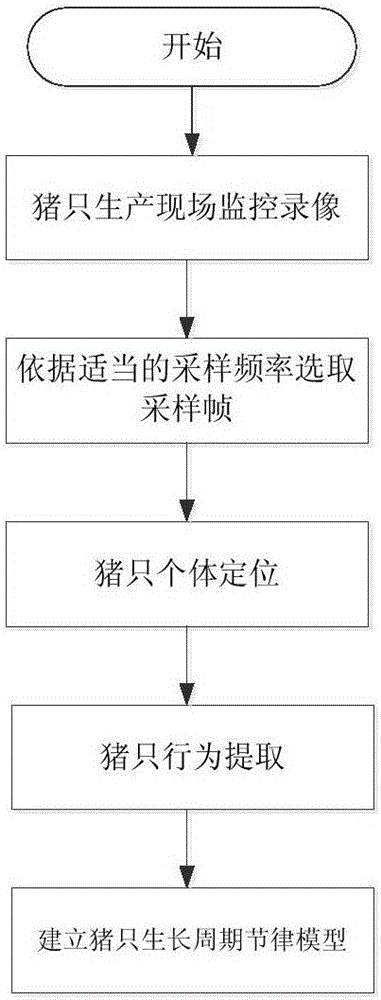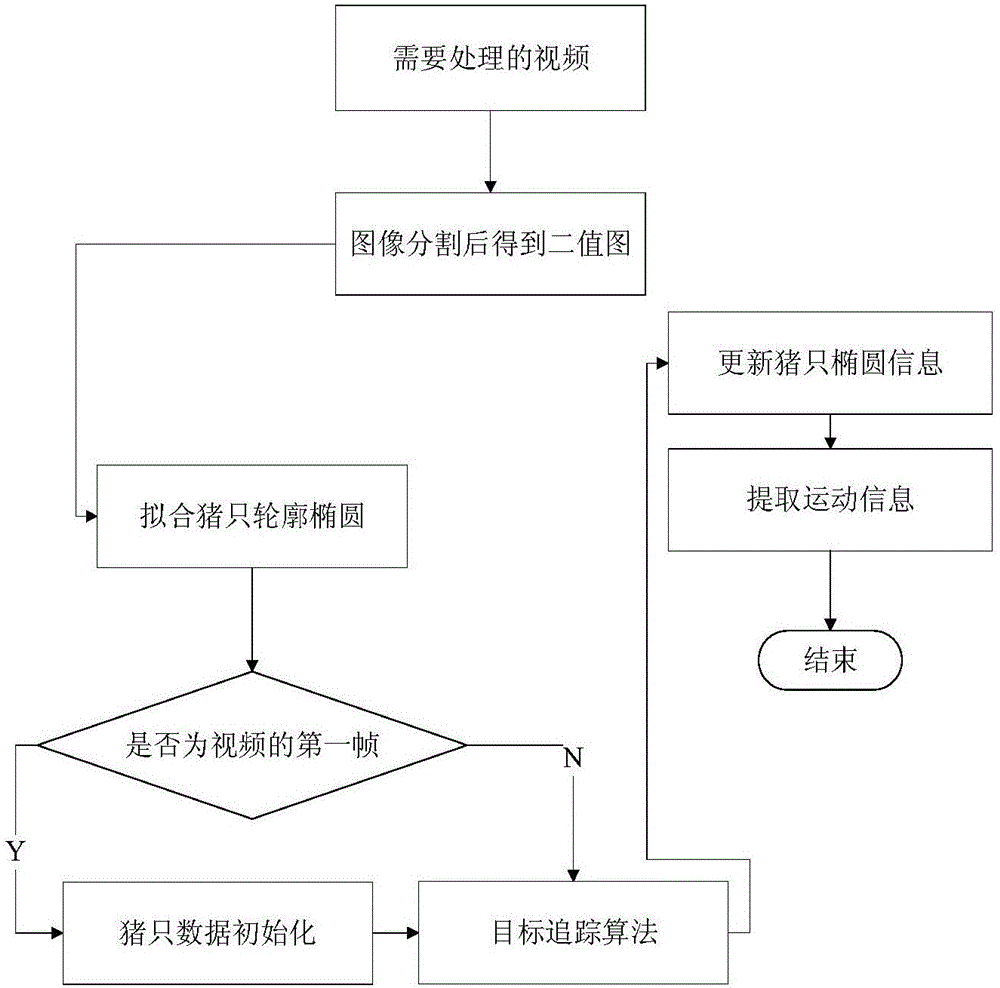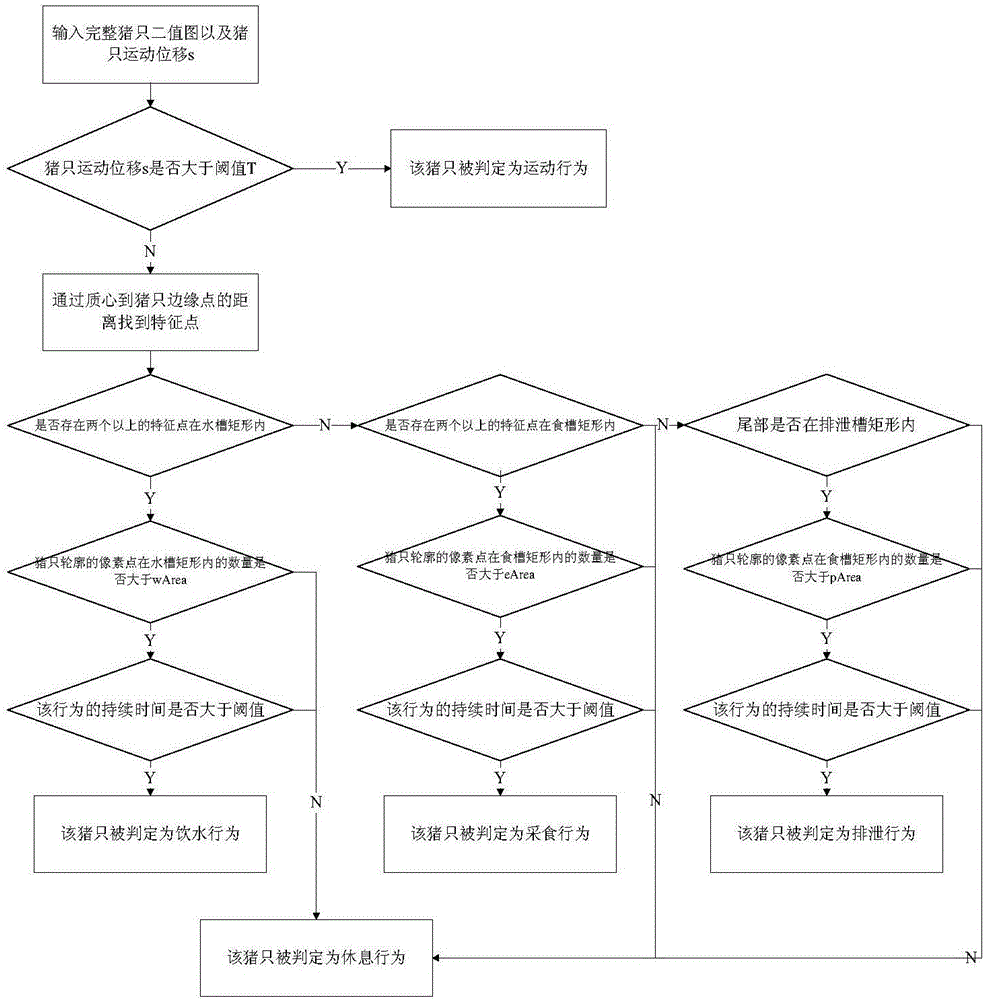Pig behavior rhythm analysis method
An analysis method and behavioral technology, applied in the field of distributed remote communication, can solve problems such as difficulties in pig behavior analysis, and achieve the effect of simple structure and reduced labor intensity
- Summary
- Abstract
- Description
- Claims
- Application Information
AI Technical Summary
Problems solved by technology
Method used
Image
Examples
Embodiment
[0042] like Figure 1-Figure 4 Shown, a kind of pig behavior rhythm analysis method, comprises the steps:
[0043] S1 Install a monitoring camera at the pig production site. The pig production site is within the field of view of the camera, and the pigs are marked to distinguish the pigs;
[0044] S2 as figure 2 As shown, the real-time monitoring video of the pig production site is obtained. The module first divides the image to obtain a binary image, and then fits the pig ellipse to locate the individual pig and determine the moving distance of the pig;
[0045] Specifically:
[0046] Using the reference object method, specifically, placing a calibration plate on the pig production site to obtain the mapping relationship between the image pixel distance and the actual distance, and then applying the method based on the combination of color features and morphological features to segment the pigs with mild adhesion and adopt The least squares method is used to fit the ellip...
PUM
 Login to View More
Login to View More Abstract
Description
Claims
Application Information
 Login to View More
Login to View More - R&D
- Intellectual Property
- Life Sciences
- Materials
- Tech Scout
- Unparalleled Data Quality
- Higher Quality Content
- 60% Fewer Hallucinations
Browse by: Latest US Patents, China's latest patents, Technical Efficacy Thesaurus, Application Domain, Technology Topic, Popular Technical Reports.
© 2025 PatSnap. All rights reserved.Legal|Privacy policy|Modern Slavery Act Transparency Statement|Sitemap|About US| Contact US: help@patsnap.com



